The stories of valorous heroes inspired the mankind since the beginning of the time. Indian literature, music, and even other art forms are extensively inspired by the valor stories of our ancient heroes. In fact, the complete structure of the Indian Literary art is found on the saga of Ram and Krishna. The epics Ramayan and Mahabharat are deep-rooted in the Indian Culture. Additionally, the characters of Ram and Krishna were more popularized by their innumerous versions in folk music, folk dance forms, the sculptures, paintings and many more. For ages, our generations have grown up listening to their stories.
Even in this case, the saga of Krishna is closer to the hearts of people. The extraordinary birth event of Krishna, his miraculous leela’s in Gokul, the motherly affection of Yashoda, Krishna’s mischief, valorous miracles in childhood and teenage love with Radha, Gopis’ grief after Krishna goes to Mathura, killing Kamsa, Krishna’s diplomacy in the Mahabharat War, the astonishing Vishwaroop Darshan to Arjun and the desolation at the end of his Avatar.
It is this multiformity in his Saga and the divine blend of Navarasa’s that inspires every artist of every art form to manifest one or the other facet of Krishna through his or her art.
The character of Krishna has a unique intermingling of divinity as well as humanity. Krishna is the beloved Vallabh of Gopis, Kanha to his mother Yashoda, Sakha of Draupadi and Friend and philosopher for Arjun. At the same time, he is depicted as the omnipresent Yogeshwar, Parabrahma, the ultimate ‘Bhagavan’.
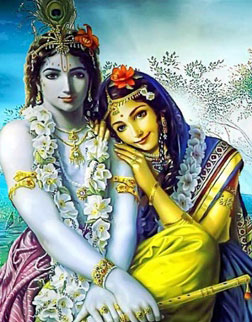
Krishna in the Literature:
The deity Krishna is mentioned right from Upanishada’s. Chandogya Upanishada mentions him as the son of Devaki and the disciple of Ghor Angiras. Vyas was the first to develop the complete character of ShreeKrishna in Mahabharat that literally mesmerized the people.
Even if Mahabharat was the first work to depict this Character as Poorna Purusha, those were the further works like Harivamsha and Bhagavat Purana that painted these colours of his childhood, Rasleela, his relationship with Gopi’s etc. Bhagavat Puran gets the credit to culminate this saga with Nav rasa’s with its sweet style of storytelling. And that was that… in the further time, innumerable epics, poetries, dramas in Sanskrit as well as Prakrit and regional languages were based on and only on Krishna.
The rise of Bhagavat Dharma:
The Bhagvat Purana gave rise to an upsurge of the Bhakti Movement called as Bhagvat-Dharma. This new wave of Krishna Bhakti and Bhagavat Dharma influenced the course of every facet of every art form. Madhvacharya, Valabhacharya formed altogether new Darshana or Philosophy based on Krishna Bhakti. Many Krishna devotees hoisted the flag of Krishna Bhakti all over India. Many royal dynasties gave patronage for the Bhagavat Dharma. The Bhagavat Dharma radiated so extensively up to the 12th century that the Krishna Bhakti as if became the leading belief of the Indian society.
Influence of Krishna on the fine arts:
Such a powerful story, the chronical and the Krishna Bhakti wave had its influence on almost all the fine arts. The paintings of this era had the major theme of Ras Leela. The sculptors mainly depicted the various incarnations and stories of Lord Krishna.
The music and dance were no exception either. The Geet Govind of Jaydeo extended this Madhura Bhakti wave from literature to the dace through his eternal Ashtapadi’s. All the classical dance styles of India even today perform these Ashtapadi’s. All the classical dance styles have their Abhinaya section resplendent with the Krishna Leela’s. This period saw the addition of Vatsalya as a Ras. This addition can be the result of the popularity of Bal–leela’s of Krishna.
Krishna and Kathak:
Kathak is the dance style originated in North India and it is believed to be born in the Vrindavan and the nearby places. Hence, it is not surprising that the Saga of Krishna it the soul of Kathak. Kathak is said to be originated from narrating the stories of Krishna. The scholars believe that even the Nritta part of Kathak is also originated from the Ras Nritya. As the legend goes, Vallabhdas, a Kathak dancer in the times of King Akbar created the Ras Nritya which further guided the Kathak dancers.
Abhinaya or Bhav part of Kathak is fundamentally based on Krishna. The kathak dancer may begin his performance by a Krishna Vandana, sometimes this Vandana depicts the details of Krishna Roop such as “Kasturi tilakam lalat patale, Vakshasthale Kaustubham” and sometimes, it depicts his naughty childhood mischiefs.
Various Kavitta and Chanda performed traditionally in the Nritta section reflect the Krishna Charitra. From Makhanchori to Kaliyadaman and from the romance of Radha Krishna to their longings, none of the facets of Krishna Saga is left untouched by these Kavitt’s. Radha Krishna Ched-chad is the most popular theme of these compositions. There are long Lamb-chad Chhanda’s that depict Raas Leela such as, Shodash Kala biraje, Vrindavan Kunj etc.
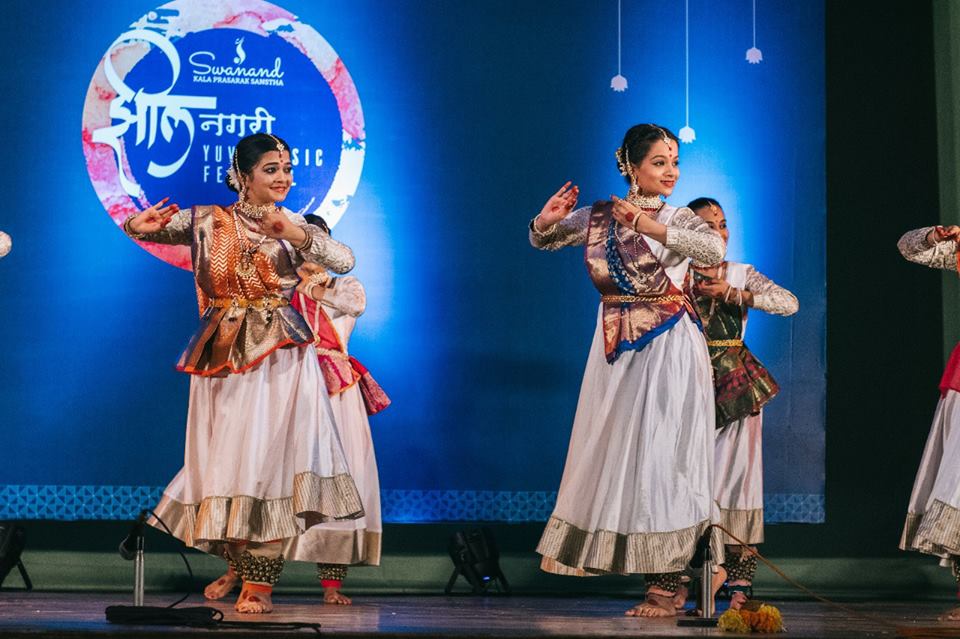
Even the gat bhav’s are traditionally centered around the Krishna stories such as his teenage stories including Makhanchori, Kaliya Daman, Gopi cheerharan, Hori, also his later velour such Kamsa vadh, Geeta Upadesh etc.
Thumri is so immersed in the colours of Krishna as if the genre itself appears to be originated for depicting the Krishna stories alone. Any romantic episode portrayed in Thumri, be it naughty fights of love or longings in separation, it is portrayed on the pair of Krishna and Radha. There innumerable instances of Krishna Radha romance in Thumri’s such as naughty chhed-chhaad in Kahe rokat dagar pyare; or a sweet complaint in Dekho Kanha nahi manat batiya, or mischief in Sham tori bansuri nek bajaun, or the ecstasy of raas in Chalo sakhi aaye Shaam. Many times this romance becomes more profound with the height of devotion it achieves when Radha or the Nayika turns from a lover to a devotee and from admirer to a believer. The mischief of ‘Aaj radhika bano sham tum’ reaches the ‘advait’ or the oneness of Radha Krishna. Thus the Krishna saga has this spiritual arena in Thumri.
Apart from Thumri, many other genres are performed in Kathak like Chaiti, Kajari, Hori, Doha’s, Ashtapadi. All these songs are woven around the chosen Nayak, Krishna.
Apart from the romantic or Kaushiki Vritti Songs, the devotional or Sattvati Vritti is also majorly depicted in Kathak. These devotional bhajans and pada’s are full of childhood mischief, the baal leela’s of Krishna, the motherly affection of Yashoda and also the velour of Krishna and devotion towards him. Many such Krishna sketches are found in Bhajans, to list a few, the sweet bhajans of Surdas such as Maiya mori main nahi makhan khayo, the meera bhajans, many bhajans by pandit Bindadin Maharaj himself like Pragate Brij nandalal.
To summarize, the saga of Krishna has an unmatched influence on Kathak. It is the Krishna Charitra which is the source of romantic ecstasy, mischievous childhood affection, the peace of devotion and the profoundness of spirituality in Kathak.






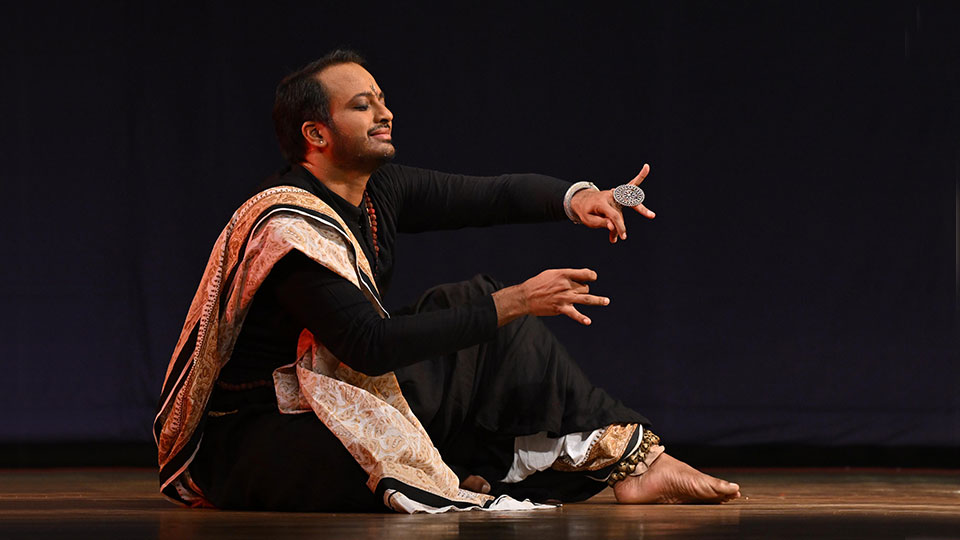
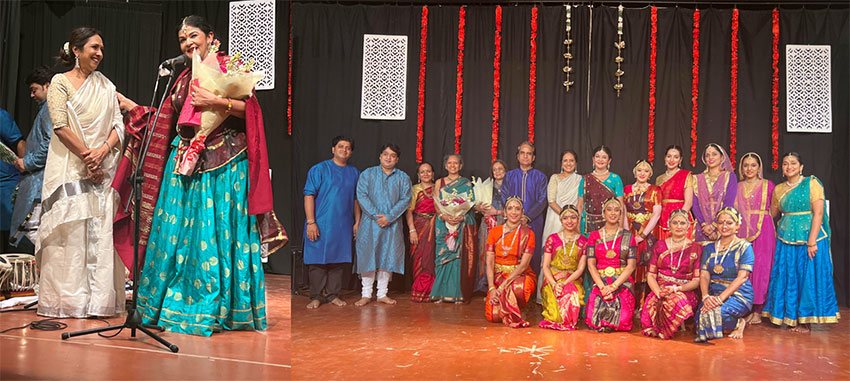
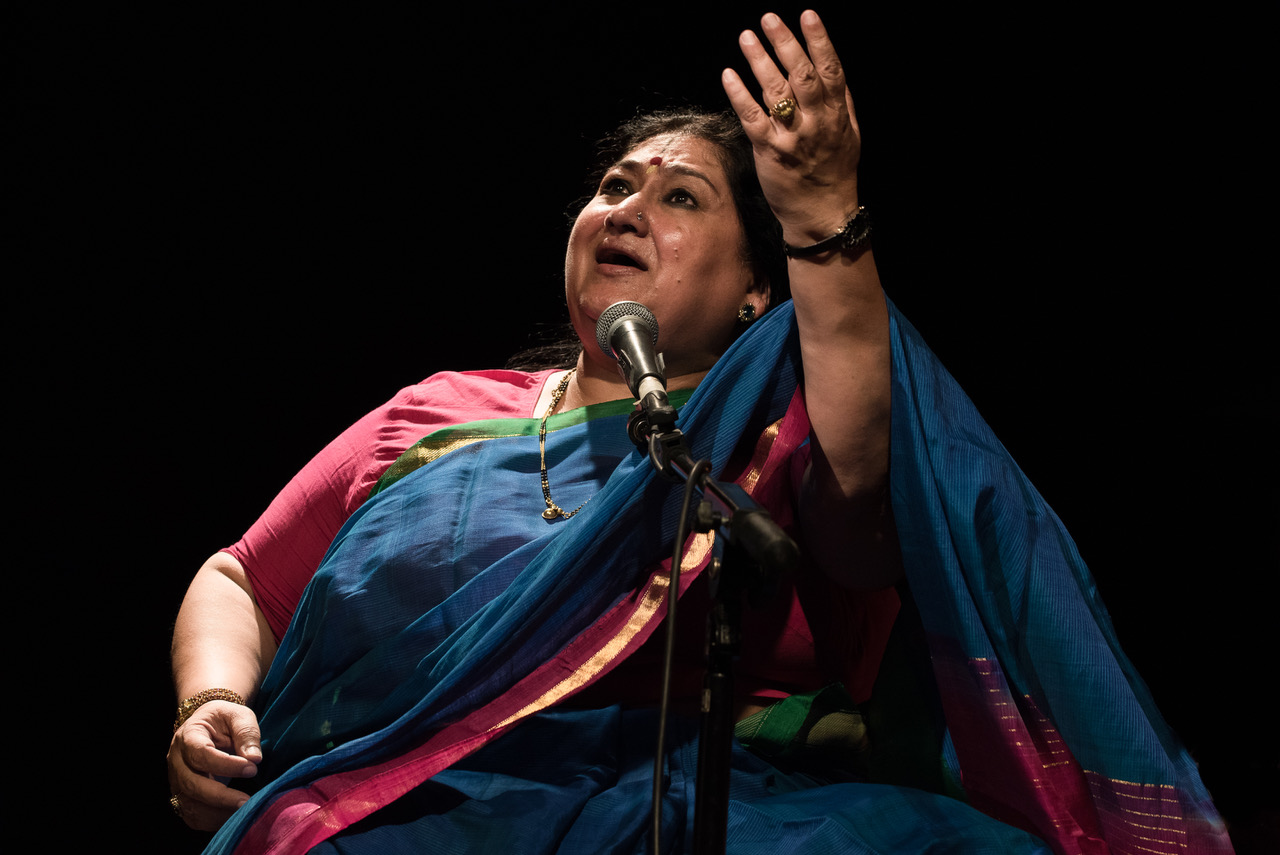
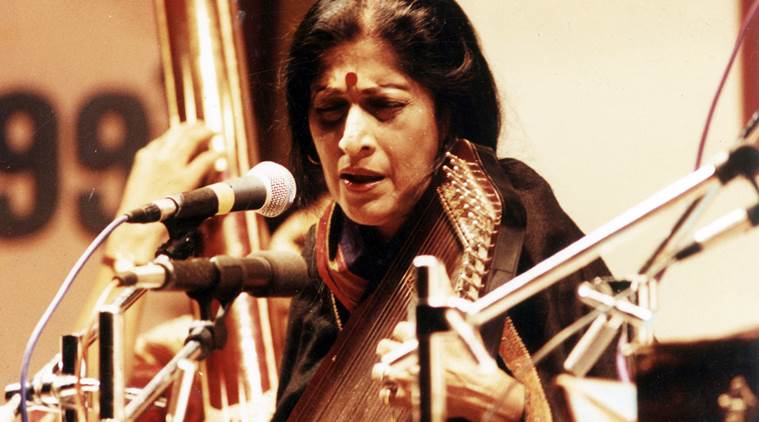

1 thought on “Krishna Chronical: A Fascinating Story of Valor”
Very interesting n informative…